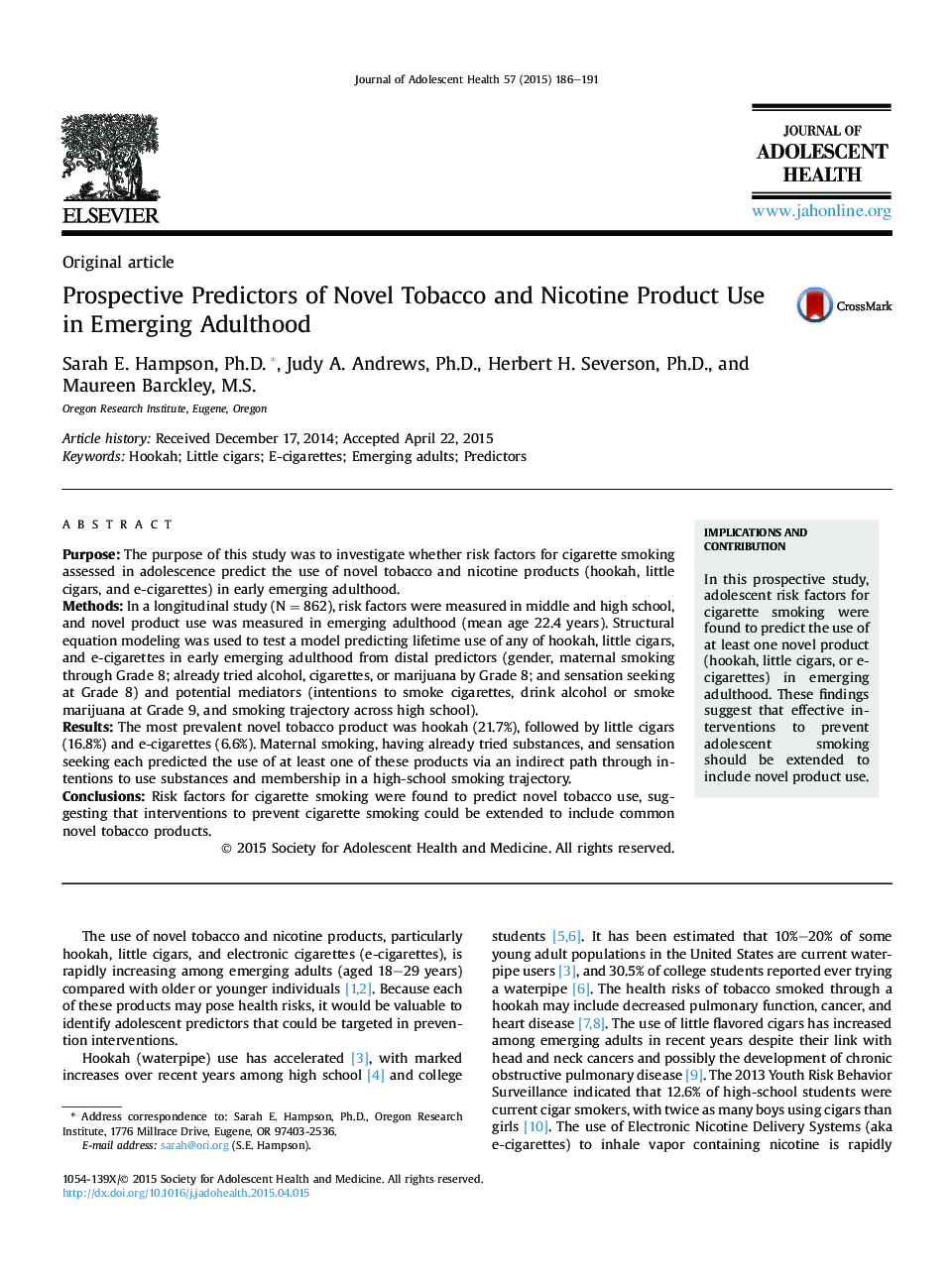| Article ID | Journal | Published Year | Pages | File Type |
|---|---|---|---|---|
| 1079227 | Journal of Adolescent Health | 2015 | 6 Pages |
PurposeThe purpose of this study was to investigate whether risk factors for cigarette smoking assessed in adolescence predict the use of novel tobacco and nicotine products (hookah, little cigars, and e-cigarettes) in early emerging adulthood.MethodsIn a longitudinal study (N = 862), risk factors were measured in middle and high school, and novel product use was measured in emerging adulthood (mean age 22.4 years). Structural equation modeling was used to test a model predicting lifetime use of any of hookah, little cigars, and e-cigarettes in early emerging adulthood from distal predictors (gender, maternal smoking through Grade 8; already tried alcohol, cigarettes, or marijuana by Grade 8; and sensation seeking at Grade 8) and potential mediators (intentions to smoke cigarettes, drink alcohol or smoke marijuana at Grade 9, and smoking trajectory across high school).ResultsThe most prevalent novel tobacco product was hookah (21.7%), followed by little cigars (16.8%) and e-cigarettes (6.6%). Maternal smoking, having already tried substances, and sensation seeking each predicted the use of at least one of these products via an indirect path through intentions to use substances and membership in a high-school smoking trajectory.ConclusionsRisk factors for cigarette smoking were found to predict novel tobacco use, suggesting that interventions to prevent cigarette smoking could be extended to include common novel tobacco products.
